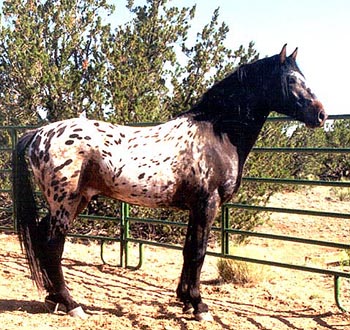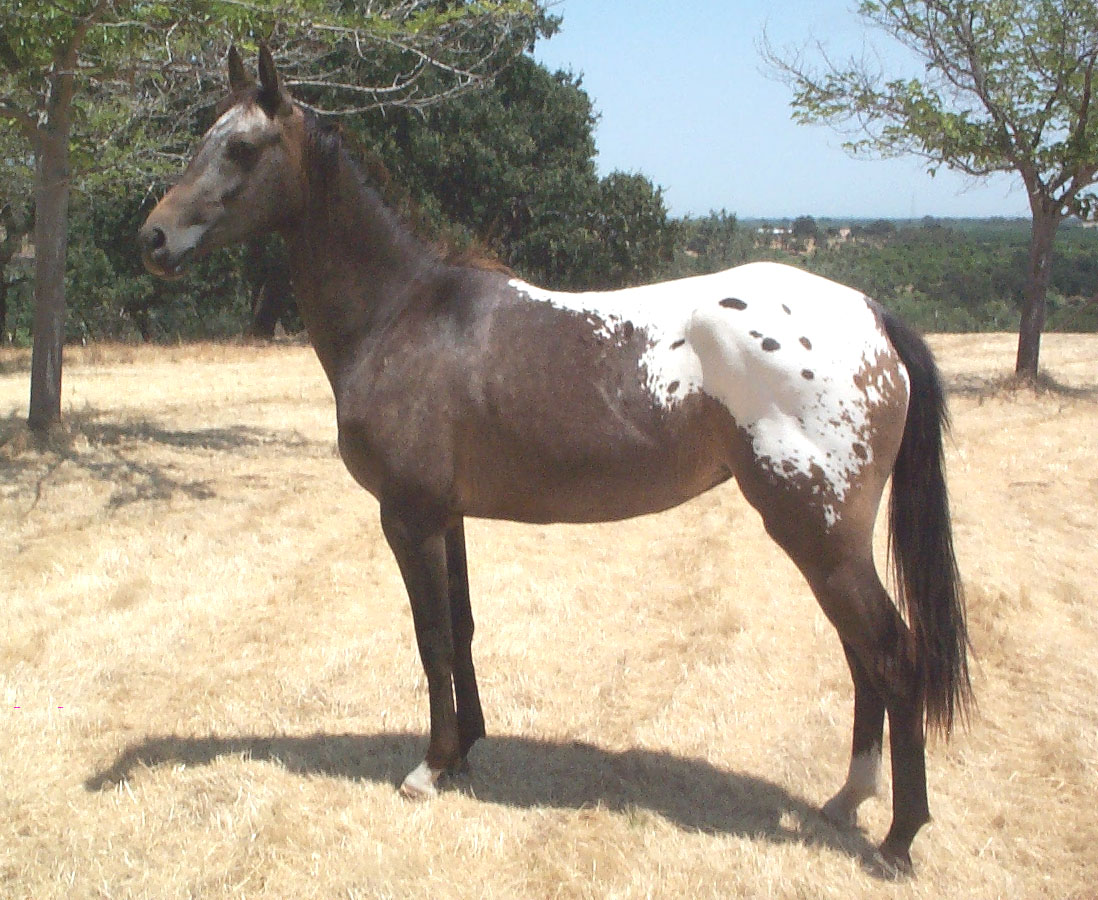
The Resurgence of Spirit: The Nez Perce Appaloosa and a Nation’s Enduring Legacy
In the rugged heartlands of the Pacific Northwest, where ancient rivers carve their paths through rolling hills and verdant valleys, a remarkable story of resilience, cultural revival, and the enduring bond between a people and their horses is unfolding. This is the story of the Nez Perce Appaloosa, a horse breed synonymous with beauty, endurance, and an almost mystical connection to the Nimíipuu (Nez Perce) people. More than just a striking coat pattern, the Nez Perce Appaloosa is a living testament to survival, a symbol of a nation reclaiming its heritage, one hoofbeat at a time.
For centuries, the Nez Perce were master horse breeders, their reputation for producing superior equines stretching across the North American continent. Long before European settlers arrived, the Nimíipuu had developed a sophisticated understanding of selective breeding, meticulously cultivating horses with exceptional intelligence, stamina, strength, and a distinctive spotted coat that would eventually give the breed its name – "Appaloosa," a corruption of "A Palouse," referring to the Palouse River region where the Nez Perce lived.

These were not just animals; they were integral to the Nez Perce way of life. Horses facilitated their expansive nomadic lifestyle, allowing them to hunt buffalo across the plains, trade with distant tribes, and move their entire villages with efficiency and speed. A man’s wealth was often measured by the size and quality of his horse herd. The horses were more than possessions; they were partners in survival, imbued with a spiritual significance that transcended their utilitarian value.
"Our people always say that the horse saved us," remarked Leo Penney, a revered Nez Perce elder and a driving force behind the modern breeding program. "It gave us mobility, it gave us food, it gave us freedom. It became part of our soul."
The Nez Perce selectively bred for specific traits that would later define the Appaloosa: the unique, often asymmetrical spotted coat patterns (leopard, blanket, roan, snowflake), mottled skin around the muzzle and eyes, white sclera (the white part of the eye, similar to humans), and striped hooves. But beyond the aesthetics, they prioritized athleticism. Their horses were known for their hardiness, agility, and incredible endurance – qualities honed over generations to navigate the diverse terrains of their ancestral lands, from dense forests to vast plains.
This golden age of Nez Perce horsemanship, however, was brutally interrupted in 1877. Facing forced relocation from their ancestral Wallowa Valley lands, a band of Nez Perce, led by the iconic Chief Joseph, embarked on a desperate 1,170-mile flight for freedom. For over three months, they outmaneuvered and outfought the U.S. Army through the rugged landscapes of Idaho, Montana, and Wyoming. Their horses were key to their survival, carrying families, supplies, and warriors, often covering astonishing distances daily.
But the surrender at Bear Paw Mountains marked not only the end of their flight but also the near-annihilation of their cherished herds. The U.S. Army, recognizing the strategic importance of the horses to the Nez Perce’s way of life and military prowess, systematically confiscated and slaughtered thousands of their finest Appaloosas. The remaining few were scattered, bred out, or lost. It was a deliberate act of cultural destruction, designed to break the spirit of the people by severing their connection to their most vital resource.
For over a century, the Nez Perce horse, in its truest form, existed primarily in memory and legend. While the Appaloosa Horse Club was established in 1938 to preserve and promote the breed, its focus broadened to include horses with the distinctive coat pattern, often bred with other American stock, leading to a divergence from the original Nez Perce type. The hardy, athletic, and culturally significant horse of the Nimíipuu became a ghost of its former self.
Then, in the early 1990s, a powerful vision emerged from within the Nez Perce Tribe: to bring back the horse that had defined their ancestors. With a deep sense of historical injustice and a yearning to restore a vital piece of their identity, the Nez Perce Tribe, in collaboration with the Appaloosa Horse Club and with crucial funding from a USDA grant, launched the Nez Perce Appaloosa Horse Registry and Breeding Program.
The challenge was immense. There were no "pure" Nez Perce horses left. The key lay in understanding what made the original breed so exceptional and then meticulously rebuilding it. Researchers studied historical accounts, tribal oral traditions, and even skeletal remains to piece together the characteristics of the pre-1877 Nez Perce Appaloosa. They sought a horse that was elegant yet robust, intelligent, inherently calm but spirited, and, crucially, a superior endurance athlete.

The solution came in an unlikely, yet historically resonant, outcross: the Akhal-Teke. This ancient, highly prized breed from Turkmenistan, known for its incredible endurance, metallic sheen, and distinctive "Type-M" conformation (a long, lean body with powerful hindquarters), shared many characteristics with the legendary Nez Perce horses. Like the Appaloosa, the Akhal-Teke had a history of being bred for challenging environments and was renowned for its stamina and intelligence. There’s even historical speculation that Akhal-Tekes or similar Central Asian breeds might have influenced the original Appaloosas through ancient trade routes, making the cross a return to a potential ancestral root.
The breeding program began with a small number of carefully selected Akhal-Teke stallions crossed with Appaloosa mares that exhibited some of the desired "old type" characteristics. The goal was not simply to create spotted Akhal-Tekes, but to re-establish a unique, distinct line – the Nez Perce Appaloosa.
"We were looking for specific traits: the endurance, the agility, the quiet mind, and that deep connection with humans," explained a program manager during a visit to the tribal lands near Lapwai, Idaho. "The Akhal-Teke brought a lot of that. Then we started refining it with subsequent generations."
The program implemented a rigorous selective breeding process. First-generation (F1) crosses are then bred back to Appaloosa mares, or to other F1s, to produce F2, F3, and subsequent generations. Each horse is evaluated for conformation, temperament, athletic ability, and the presence of traditional Appaloosa characteristics. DNA testing plays a vital role in tracking lineage and ensuring genetic diversity. The program aims to achieve a horse that is at least 7/8 Appaloosa, while retaining the unique qualities brought by the Akhal-Teke foundation.
The Nez Perce Appaloosa horses emerging from this program are a sight to behold. They are typically taller and more finely boned than many modern Appaloosas, with a graceful athleticism reminiscent of their Akhal-Teke ancestors, combined with the distinctive spotted coats and hardiness of their Appaloosa heritage. They possess an innate calm and intelligence, making them excellent partners for both seasoned equestrians and those learning the traditional horsemanship of the Nez Perce.
These horses are not merely bred for show. They are put to work, embodying the very qualities their ancestors possessed. Nez Perce Appaloosas regularly compete, and excel, in endurance riding events across the country, showcasing the stamina for which the breed was originally famous. They are also used for traditional trail riding, cultural demonstrations, and as therapeutic animals, bringing healing and connection to tribal youth.
The revival of the Nez Perce Appaloosa is more than an exercise in animal husbandry; it is a profound act of cultural reclamation. For the Nez Perce people, the horse represents their resilience, their connection to the land, and the enduring strength of their traditions. It provides economic opportunities through breeding, training, and tourism. It fosters a renewed sense of pride and identity among tribal members, particularly the younger generations, who are learning the ancient art of horsemanship passed down through their ancestors.
"When you ride one of these horses, you feel a connection to history, to your ancestors," said a young Nez Perce rider, her hand resting gently on the neck of her spotted mare. "It’s like they carry the spirit of our people."
The Nez Perce Appaloosa Horse Program is a living, breathing testament to the power of cultural memory and the determination of a people to honor their past while forging a vibrant future. From the brink of extinction, through careful stewardship and a profound respect for their heritage, the Nez Perce have brought back not just a horse, but a symbol of their enduring spirit. As these magnificent spotted horses once again roam the ancestral lands, each thunderous hoofbeat echoes the resilience of the Nimíipuu, a reminder that even after the darkest storms, the spirit of a nation, like its horses, can rise again, stronger and more beautiful than ever.


